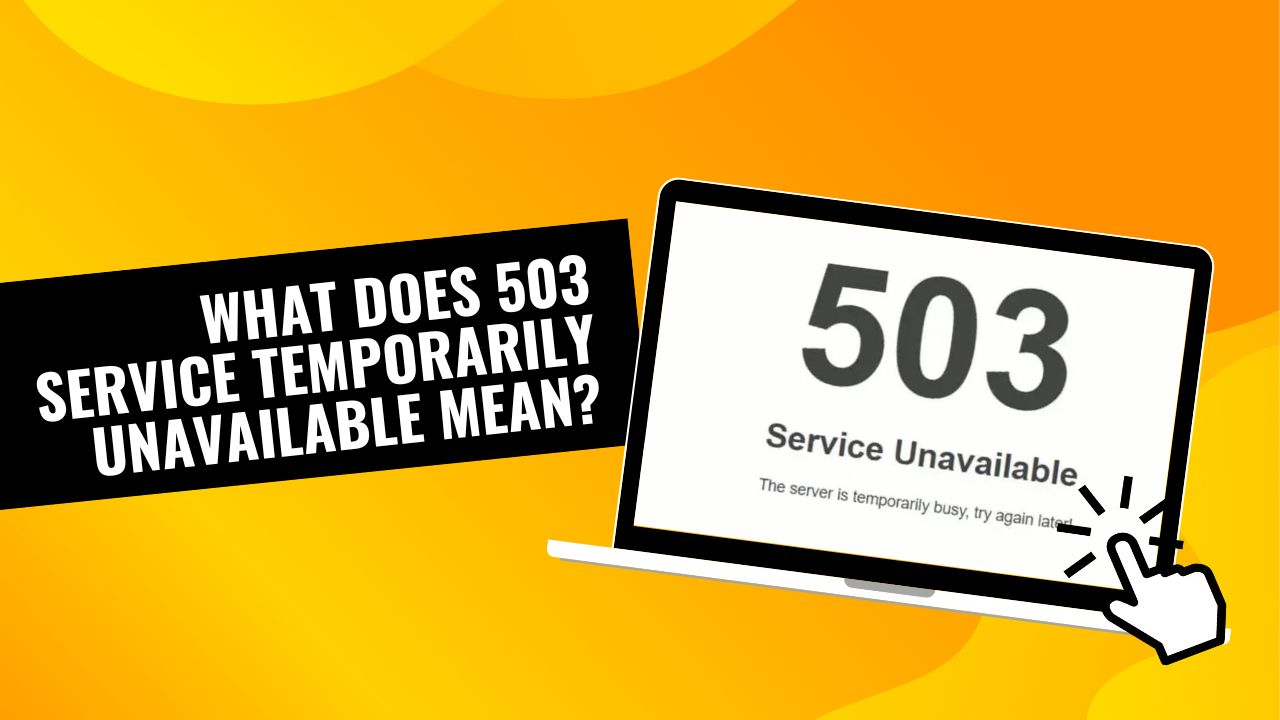Many times, when we visit a website, we may encounter an error message on the screen saying “503 Service Temporarily Unavailable.” It is obvious to think that this error might be caused by to server issue or any other issue technical issue from the website.
This is annoying and that’s why I am going to show you what 503 service temporarily unavailable means and how to fix such errors in the future.
What Does 503 Service Temporarily Unavailable Mean and Its Causes?
The 503 Service Temporarily Unavailable error message indicates that the website’s server is currently unable to handle requests. This usually occurs due to one of the following reasons:
Server Overload
Websites can experience a sudden spike in traffic which overloads the server resources. Common causes include:
- Viral social media posts driving large amounts of traffic
- Flash sales or special promotions attract more visitors
- DDoS (Distributed Denial of Service) attacks flooding the server with requests
When the traffic exceeds the server’s capacity, it becomes overloaded and is unable to respond, resulting in a 503 error.
Technical Issues
Sometimes the 503 error occurs due to technical problems like software bugs, hardware failures, or network connectivity issues. This makes the server unavailable to respond to requests.
Maintenance Work
Websites need regular maintenance and upgrades which requires taking the servers offline temporarily. This leads to 503 errors for visitors trying to access the site during the maintenance period.
Common 503 Error Message Variations
While the core meaning of a 503 error stays the same, the exact text of the error message may vary across websites. Some common variations include:
- 503 Service Unavailable
- 503 Service Temporarily Unavailable
- HTTP Server Error 503
- HTTP Error 503
- Error 503 Service Unavailable
Consequences of 503 Errors
Frequent or prolonged 503 errors can negatively impact websites in the following ways:
Loss of Revenue
When visitors encounter 503 errors, they are likely to leave and visit a competitor’s website instead. This results in lost sales and revenue for businesses.
Lower Search Engine Rankings
Facing regular 503 errors signals to search engines that the website has reliability and uptime issues. This causes lower search engine rankings over time.
Reputation Damage
Visitors who repeatedly get 503 errors develop a poor impression of the website’s quality and reliability, damaging its brand reputation.
How to Fix the 503 Service Unavailable Error
Here are some steps that can be taken to resolve the root causes and eliminate 503 errors:
Upgrade Hosting Plan
Switching to a robust hosting plan with more server resources can prevent overload issues.
Enable Caching
Caching reduces server requests by storing copies of webpages to serve visitors instead of dynamically generating each page view.
Optimize Database Queries
Inefficient database queries can choke server resources rapidly. Optimizing them enhances performance.
Check for Software Conflicts
Incompatible plugins or themes could be clashing, using up resources, and triggering 503s. Disable/upgrade them.
Monitor Traffic
Use analytics to anticipate traffic changes and scale server capacity up/down accordingly.
How to Prevent Future 503 Errors
To avoid frequent 503 errors in the future:
Stress Test Servers
Simulate different traffic levels to gauge performance limits and upgrade proactively.
Set Up Monitoring
Get notifications for key server metrics like uptime, CPU usage, etc. to catch problems early.
Schedule Maintenance
Set downtime windows for regular maintenance to avoid impacting visitors.
Create Custom 503 Pages
Display visitor-friendly messages explaining the outage and when to retry.

